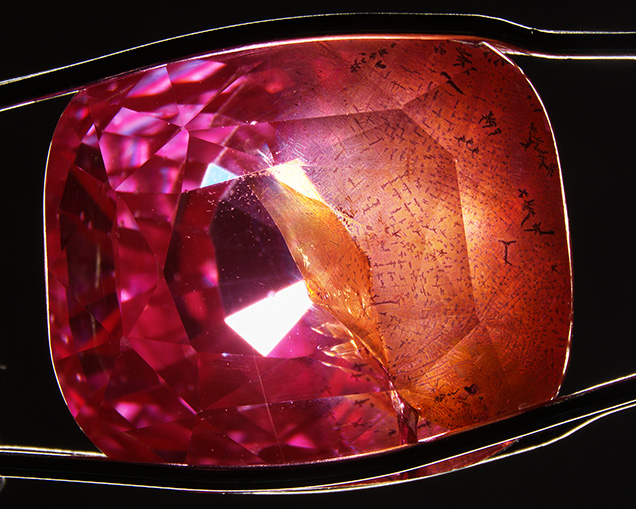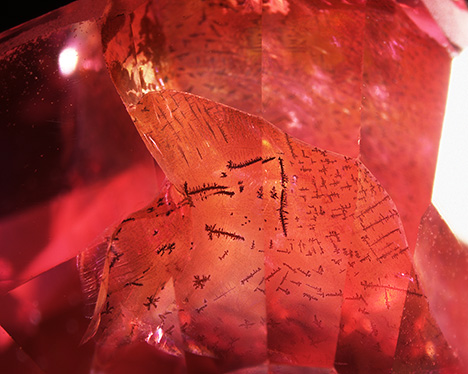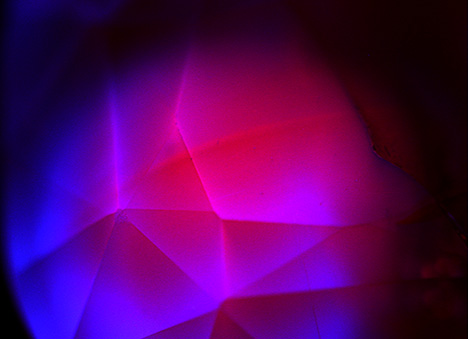Laboratory-Grown Sapphire with Unusual Features

The Hong Kong laboratory recently examined a 14.36 ct pink-orange cushion mixed-cut specimen measuring 12.97 × 11.41 × 10.59 mm. Standard gemological testing yielded an RI of 1.760–1.768, a chromium emission line in red using a handheld spectroscope, strong red fluorescence under long-wave UV, and weak red fluorescence under short-wave UV. These properties were consistent with pink sapphire. Magnification revealed large fractures containing orange staining and some partially crystallized foreign material (figure 1). The foreign material partially crystallized in a dendritic pattern resembling that of diaspore (figure 2). Other natural-looking features included a twinning plane and tubules. Nonetheless, the observation of indistinct Plato lines and a slight curvature in the twinning plane raised suspicion about the stone’s nature.


A strong red curved band observed in the DiamondView confirmed it was a Verneuil (flame-fusion) synthetic sapphire (figure 3). The absence of Ga, V, and Fe in the specimen, determined using laser ablation–inductively coupled plasma–mass spectrometry (LA-ICP-MS), provided further evidence supporting its synthetic nature. Ti was below detection limit in all six spots. Cr was below the detection limit in one spot and 37.61–44.31 ppma in five other spots.
Although flame-fusion synthetic sapphires are common in the marketplace, it is unusual to encounter a specimen containing such natural-looking orange staining and partially crystallized foreign material in the fractures. Careful observation as well as advanced testing are required for the correct identification of the natural or synthetic origin of such specimens.



